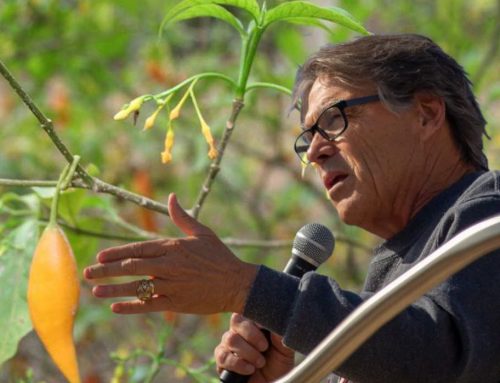Exploring Cannabis Funding Around the World – Latin America – Part 2
HCN Investigates – Cannabis Funding Details in Latam.
With the notable exceptions of Uruguay and Colombia, the Latin American cannabis industry remains in its infancy. While Latin American cannabis will likely be worth more than $10 billion in a few years, investment into this blossoming market is relatively slow-going. Recently, the Colombian export agency ProColombia announced that more than $400 million has been invested into the Colombian cannabis industry, which is no mean sum. Compared to the $2 billion Canadian recreational cannabis industry, however, Colombia has a long way to go. (Graphic: Viviana Hershey)
Cash flow within the Latin American cannabis industry
In stark contrast to the European cannabis industry, Latin America has a variety of ongoing cannabis production operations that produce significant revenue. Therefore, this region’s cannabis market is not wholly dependent on international investment. As the Latin American cannabis industry continues to scale up, operating revenue will provide an even greater segment of this emerging market’s funding needs.
To reach this desired scale, however, Latin American cannabis companies will need to continue soliciting international partnerships and investments in the form of private equity and venture capital funding. Codie Sanchez, a former angel investor and current managing director at Entourage Effect Capital, suggests that investors should “hold on to [their] seatbelts” because “Latin America is an entirely different thing.” She cautions that international investors will need to leverage an understanding of local markets to succeed in this emerging cannabis economy.
Private equity
Colombian cannabis giant Chemesis received $25 million in initial funding from Alumina Partners, a New York private equity firm with a heavy focus in the emerging global cannabis economy. Other private equity firms, such as Kannafield Capital, are based in Latin America and cater exclusively to Latin American clients. Private equity firms around the globe are keen to invest in the Latin American cannabis market, which they see as a guaranteed performer over the next few years.
Venture capital
Canalis Capital is a Panama-based venture capital firm focused on providing Latin American cannabis companies with investment from Latinos, not international investors. Musica Capital Group is another notable Latin American cannabis venture capital firm that has its base of operations in Colombia. Managing director Carol Ortega provides capital and consulting services to native Latin American cannabis entrepreneurs and international companies seeking to capitalize on this emerging cannabis market.
Operating revenue
Certain segments of the Latin American cannabis industry are already proving to be reasonably lucrative. Fotmer Life Sciences, for instance, expects that its Uruguay operations will reach breakeven cash flow in 2020, proving the profitability potential of Latin American cannabis. Colombia is shaping up to be a significant revenue-generator within the Latin American cannabis industry, and companies based in nations that have legalized medical cannabis, such as Peru, Argentina, and Brazil are also starting to generate notable amounts of operating revenue.
Latin American cannabis funding—five-year projections
The international cannabis investment community is clearly keen on making Latin America one of the world’s largest cannabis producers over the next few years. Latin America is uniquely situated among emerging cannabis markets due to the heavy emphasis that investors place on cannabis export out of countries in this region. While ongoing efforts to develop the cannabis industry in Europe, for instance, are being undertaken primarily to access Europe’s more than 750 million inhabitants, investors are just as interested in Latin America’s export potential as they are in this area’s roughly equal population size.
This unique status can largely be chalked up to the socioeconomics of Latin America. While some Latin American countries, such as Brazil and even Colombia, have experienced significant degrees of economic revival over the last decade or so, Latin America still bears the scars of colonialism, political warfare, and continued vassalization by Western powers. As a result, more than one in 10 Latin Americans live in situations of extreme poverty, and more than 30% of the region’s population are below the poverty line.
For cannabis investors, this situation represents a double-edged sword. While the relative weakness of Latin American economies makes it incredibly cheap to produce cannabis in nations like Colombia and Uruguay, cannabis products will remain cost-prohibitive for many Latin Americans for the foreseeable future. It’s a bald fact that fewer Latin Americans have the disposable income necessary to purchase cannabis products compared to North Americans or Europeans, leading cannabis companies to view Latin America as a source of cheap labor and perhaps, down the road, thriving product distribution channels.
The more that cannabis investors pursue equitable, sustainable practices in their dealings in Latin America, the more the local population will reciprocally thrive and contribute to the global cannabis consumer economy. The more that Latin America is exploited as a source of cheap cannabis-industry labor, however, the slower the Latin American cannabis industry will grow, and the more reticent major regional economies will be to enact comprehensive recreational marijuana reform packages.
Chad Walkaden believes that the “damaging stigma… associated with cannabis seems to be a crucial factor that… [must] change for self-sustaining domestic markets to flourish in LATAM.” Walkaden suggests that “real-world studies” could be used to educate Latin American consumer populations and support relevant officials as they promote the usefulness and safety of cannabinoid medicines.
In five years, Latin America may either be a prominent producer within the global cannabis supply chain, a major source of recreational cannabis revenue, or both. How international investors behave today will determine whether the future history of Latin American cannabis becomes a tale of reciprocity and prosperity or simply another chapter in the story of Latin America’s exploitation at the hands of Western powers.
Author – HCN Investigates: Samuel Popejoy, HCN Business Correspondent
All Rights Reserved, Not to be reprinted or reused without express permission. Copyright: Highly Capitalized 2021



































